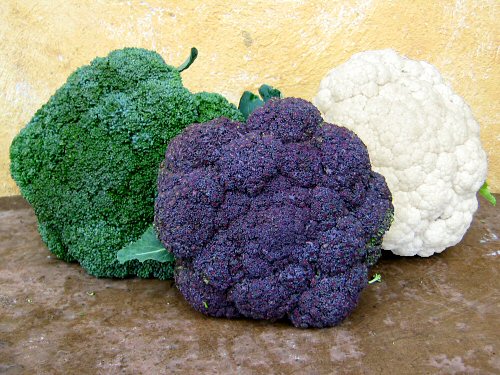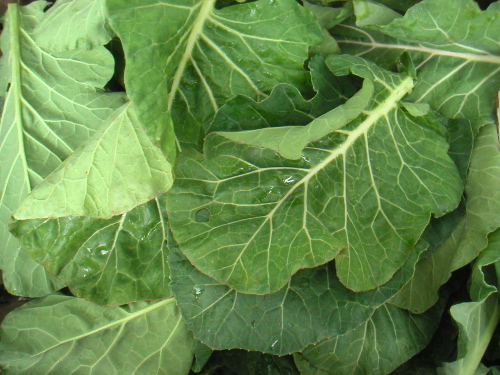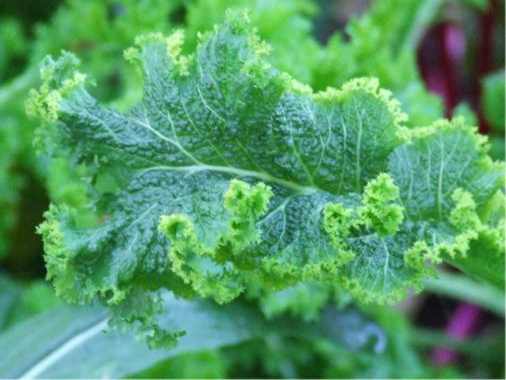Fall Vegetables to grow
Beets
 Beets are
a cool season vegetable crop. This root veggie grows quickly and they can survive frost and almost freezing
temperatures. You can use both the root and the leaves. Don't let the roots get
longer than three inches or else the beets will get tough and woody. Nutrition:
Beets contain small amounts of several vitamins and minerals. Beet greens are a
good source of calcium and Vitamin A.
Beets are
a cool season vegetable crop. This root veggie grows quickly and they can survive frost and almost freezing
temperatures. You can use both the root and the leaves. Don't let the roots get
longer than three inches or else the beets will get tough and woody. Nutrition:
Beets contain small amounts of several vitamins and minerals. Beet greens are a
good source of calcium and Vitamin A.Beans
Beans make a good fall
garden vegetable only if you live in a warm climate, or you have at least two
months before the first frost. During the summer, beanstalks get limp and
tired, making late August an ideal time to plant. The whole young pods of bean
plants, if picked before the pods ripen and dry, are very tender and may be
eaten cooked or raw. Nutrition: A good source
of vitamins A, C, K and B, folate and the minerals.

Broccoli is one of the best vegetables for home gardens. It is one of the least susceptible plants to pests, is rich in vitamins and minerals, and can flourish equally well in the fall and spring. Start plants indoors or outside in July or August. Protect plants from extreme temperatures. Nutrition: A good source of beta-carotene (converts to Vitamin A); Vitamin C, calcium, potassium, folate, and iron.
Broccoli

Broccoli is one of the best vegetables for home gardens. It is one of the least susceptible plants to pests, is rich in vitamins and minerals, and can flourish equally well in the fall and spring. Start plants indoors or outside in July or August. Protect plants from extreme temperatures. Nutrition: A good source of beta-carotene (converts to Vitamin A); Vitamin C, calcium, potassium, folate, and iron.
Cabbage
 Cabbage is
heartier than most and actually thrives in cooler regions. It can grow to
maturity in late fall or early spring. Cabbage should be planted in moist soil
and watered regularly, don’t let the soil get too saturated. The crop takes 2-3
months until harvested and the results are full, beautiful heads that can be
stored for a few months at a time. Nutrition: A source of
Vitamins C, K, & A and folate
Cabbage is
heartier than most and actually thrives in cooler regions. It can grow to
maturity in late fall or early spring. Cabbage should be planted in moist soil
and watered regularly, don’t let the soil get too saturated. The crop takes 2-3
months until harvested and the results are full, beautiful heads that can be
stored for a few months at a time. Nutrition: A source of
Vitamins C, K, & A and folate Carrots
 Carrots
are one of the most popular vegetables in the world. Carrots can be stored for
up to nine months. They can also be picked whenever they reach a usable size. This
makes them perfect for the impatient gardener. Nutrition: Rich
in beta-carotene (converts to Vitamin A). Also a source of Vitamins C & B6,
folate and essential minerals including potassium, calcium, magnesium and
manganese
Carrots
are one of the most popular vegetables in the world. Carrots can be stored for
up to nine months. They can also be picked whenever they reach a usable size. This
makes them perfect for the impatient gardener. Nutrition: Rich
in beta-carotene (converts to Vitamin A). Also a source of Vitamins C & B6,
folate and essential minerals including potassium, calcium, magnesium and
manganese
 Collards
Collards
Collards are one of the few vegetables that actually
become tastier with frost. Both cold-tolerant and heat-tolerant, collards are easygoing
crops. Collards can tolerate slightly alkaline soil and drought, but the leaves
may suffer. Collards are best grown in a cool, moist atmosphere with balanced
soil and plenty of sunshine. Nutrition: A good source of
vitamins A, C, K, and the minerals iron and calcium as well as phytonutrients. Chard
Kale
Kohlrabi
Kohlrabi is a member of the cabbage family, and has a very unique appearance. It is much easier to plant and harvest than cabbage, with a six-week development period. Kohlrabi is uniquely sweet, with water chestnut flavors. It’s superb raw or steamed. Nutrition: A good source of vitamin C &B, folate and essential mineralsLeeks
Lettuce
Mustard greens
 Mustard greens are healthy and delicious,
plus you can use the seeds to make your own ground mustard! Mustard greens have
a great flavor; they are often associated with a very peppery, zesty, and a
very striking flavor, quite similar to that of the condiment mustard. Mustard
greens are very easy to grow and grow very fast. Plant in soil that is be
reliably cool. Nutrition: A source
of Vitamin K, A, C and Folate.
Mustard greens are healthy and delicious,
plus you can use the seeds to make your own ground mustard! Mustard greens have
a great flavor; they are often associated with a very peppery, zesty, and a
very striking flavor, quite similar to that of the condiment mustard. Mustard
greens are very easy to grow and grow very fast. Plant in soil that is be
reliably cool. Nutrition: A source
of Vitamin K, A, C and Folate.Onions
 Onions are a vegetable that comes in many
popular and delicious varieties. Onions should be grown in a well-weeded area,
and they thrive in the presence of other vegetables, like peas and turnips. Onions
are fully mature when their tops have fallen over. After pulling from the
ground allow the onion to dry, clip the roots and cut the tops back to one
inch. The sweeter the onion, the higher the water content! Nutrition: A source
of Vitamin C and fiber.
Onions are a vegetable that comes in many
popular and delicious varieties. Onions should be grown in a well-weeded area,
and they thrive in the presence of other vegetables, like peas and turnips. Onions
are fully mature when their tops have fallen over. After pulling from the
ground allow the onion to dry, clip the roots and cut the tops back to one
inch. The sweeter the onion, the higher the water content! Nutrition: A source
of Vitamin C and fiber. Peas
Radishes
 Radishes are root vegetables. Radish plants are grown for
their crisp, peppery-tasting roots. Radishes can look similar to beets, but
radishes are usually smaller, smoother, and brighter in color. Radishes are the ideal fall vegetable
due to their vibrant fuchsia skin. Planting these in a fall garden is easy
since they take up so little space. They grow best in full sun and fertile,
loose soil with good drainage. Nutrition: A good source of vitamins A, C, K and B, folate and
the minerals.
Radishes are root vegetables. Radish plants are grown for
their crisp, peppery-tasting roots. Radishes can look similar to beets, but
radishes are usually smaller, smoother, and brighter in color. Radishes are the ideal fall vegetable
due to their vibrant fuchsia skin. Planting these in a fall garden is easy
since they take up so little space. They grow best in full sun and fertile,
loose soil with good drainage. Nutrition: A good source of vitamins A, C, K and B, folate and
the minerals.Spinach
 Whether
it’s steamed or tossed in a salad, spinach can be enjoyed from the beginning of
fall until late into the season. Spinach is a heavy feeder. Incorporate lots of
compost. The best way to store excess spinach is in the freezer. Just pop it in
the microwave when you are ready for a healthy, delicious treat. Nutrition:
A good source of vitamins A, C, K and folate and the minerals manganese,
potassium and iron as well as certain phytonutrients.
Whether
it’s steamed or tossed in a salad, spinach can be enjoyed from the beginning of
fall until late into the season. Spinach is a heavy feeder. Incorporate lots of
compost. The best way to store excess spinach is in the freezer. Just pop it in
the microwave when you are ready for a healthy, delicious treat. Nutrition:
A good source of vitamins A, C, K and folate and the minerals manganese,
potassium and iron as well as certain phytonutrients.

No comments:
Post a Comment